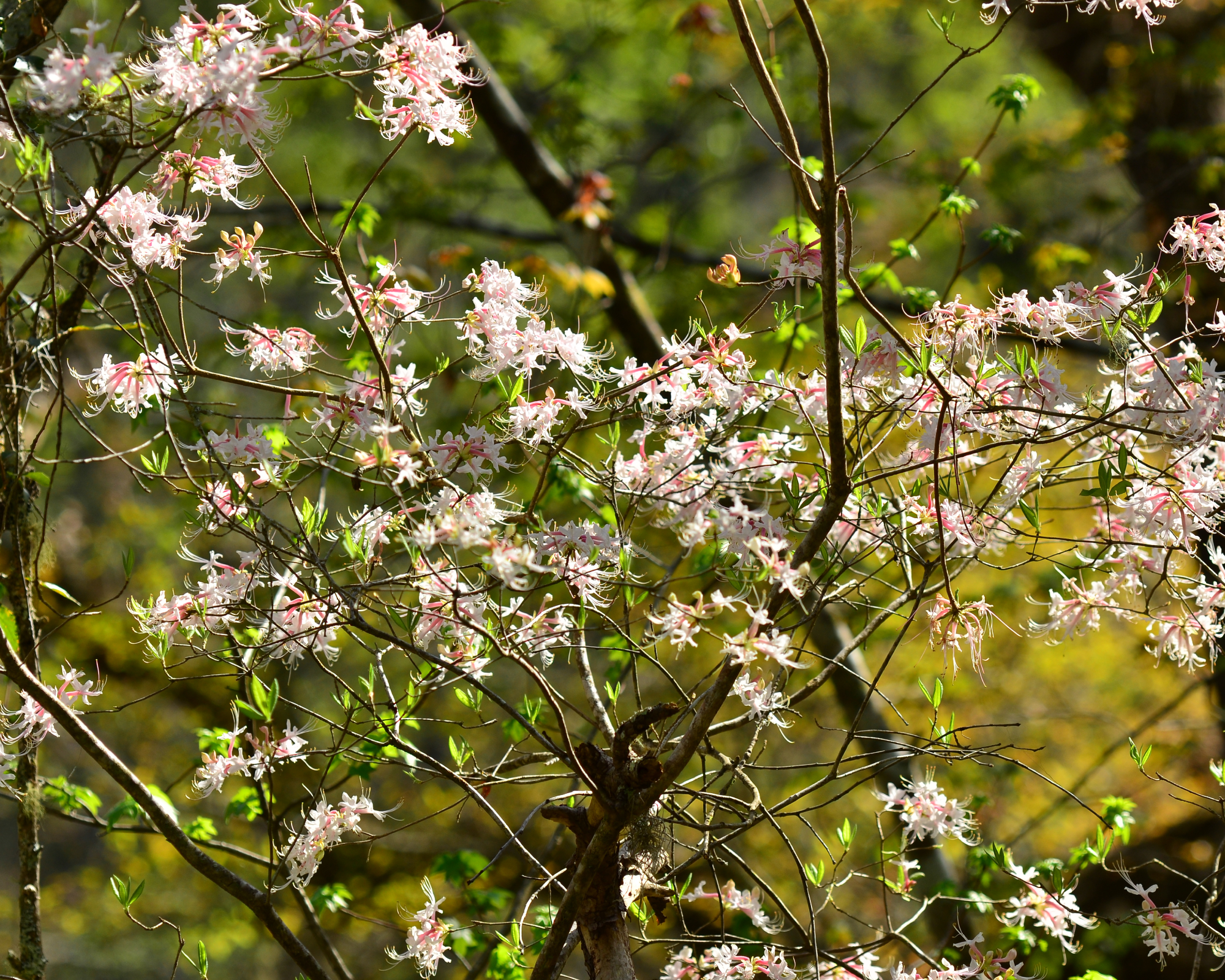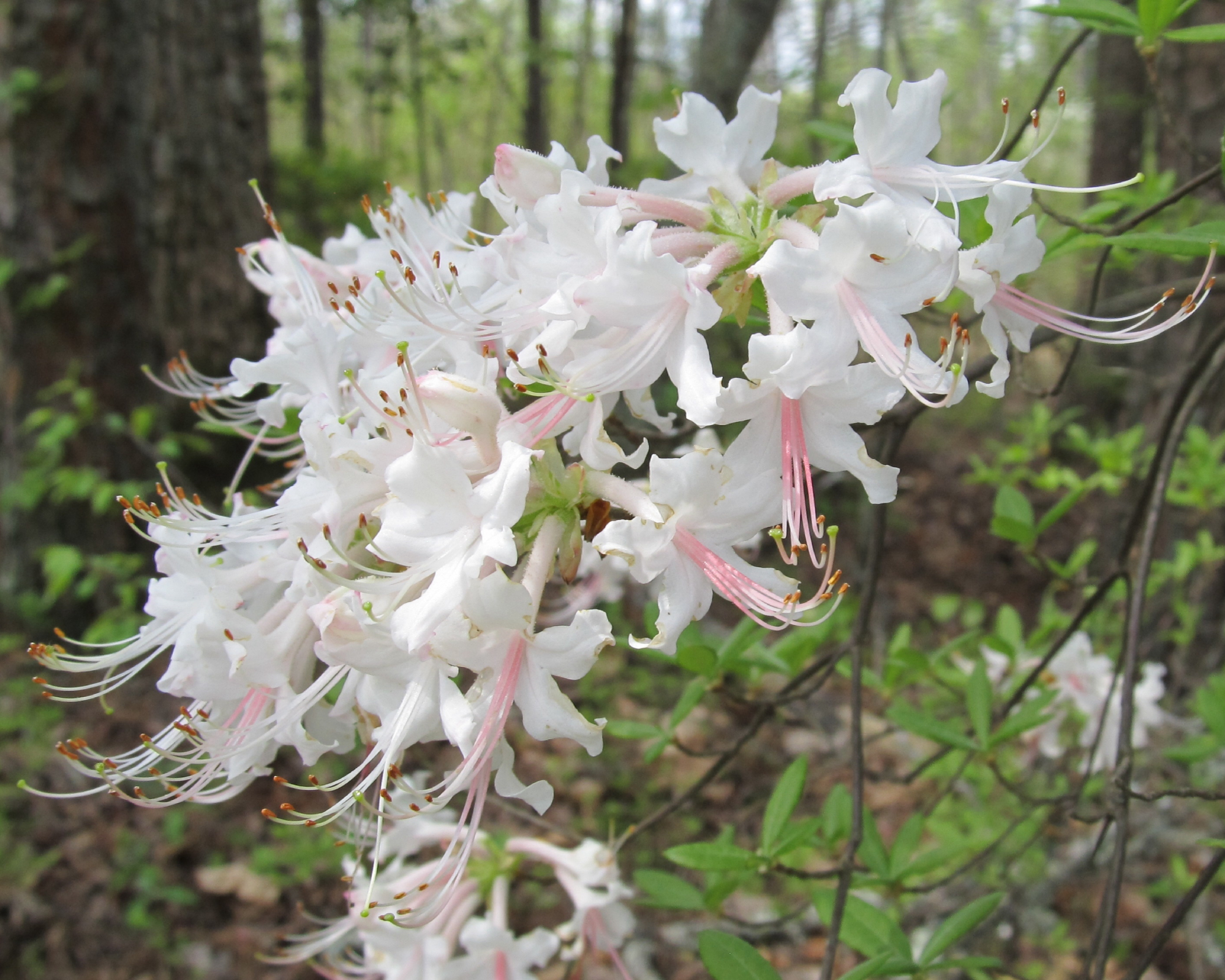Grow Wild Azalea In Your Own Backyard: Complete Care Guide And Expert Advice For This Spring Beauty
Although it is native to the southeastern United States, wild azalea grows in mild climates across much of the country. Learn how to grow wild azalea at home!


Quick Facts
Botanical name: Rhododendron canescens
Also known as: Mountain azalea, hoary azalea
Height: 6-15 ft. (1.8-4.6 m.)
Spread: 6-12 ft. (1.8-3.6 m.)
Sun exposure: Part sun, full sun
Soil requirements: Acidic
Hardiness zones: USDA zones 5-9
When to plant: Fall, spring
Flowering time: Late spring
Most gardeners first find interest in wild azalea bushes due their immense ability to draw pollinators. An invaluable member of the native ecosystem, plants like hoary azalea are prized for both their adaptability and ease of care.
Those who grow wild azalea are often surprised by their resilience and dependability in terms of bloom. All types of azaleas are showy, but the wild azalea is particularly interesting with its clusters of flowers that emerge before leaves. Their appeal is only furthered by their usefulness in the home landscape, serving as a true show-stopper within early spring beds.
Caring for Mountain Azalea
Wild azalea, or mountain azalea, are a beautiful and unique variety of the garden classic. Let's explore how to grow a wild azalea tree in greater depth, detailing their needs and seasonal care.
Light

Though plants will tolerate some early morning sun, shrubs will generally perform best under partial shade conditions. Dappled or filtered light will be ideal, allowing for the greatest flower production in spring. Shade will be of noted importance throughout the warmest parts of the afternoon, protecting foliage from especially intense sunlight.
Temperature & Humidity
Plant growth will be most active when temperatures are moderate, ranging between 60-80 F (16-26 C). Shrubs will tolerate both high heat and humidity throughout their hardiness zone. Still, growers should monitor for heat-related stress throughout summer, supplementing water and/or shade as needed.
Water
Experienced growers have found it best that plants are not allowed to dry completely between watering. Azalea water requirements dictate routine irrigation. Watering deeply and on a weekly basis will help to better maintain levels of moisture within the soil. Care should be taken, however, to avoid overwatering. A waterlogged medium, in which moisture cannot drain freely, is likely to prove most problematic.
Fertilizer
Though optional, the routine use of fertilizer for azaleas in spring can help to promote growth. Well-balanced feeds are best applied just after flowering has ceased. This will serve to boost foliage through summer and encourage the set of the next season's buds. Strength and frequency of feeding should gradually decrease over time, allowing plants to slip into dormancy with the arrival of cooler temperatures in fall.
Sign up for the Gardening Know How newsletter today and receive a free copy of our e-book "How to Grow Delicious Tomatoes".
Soil & Compost
Wild azalea shrubs flourish when planted into rich, well-draining beds. Soil tests before planting can help gardeners to gain a better understanding of their space, amending as needed. Finished compost and other components may be added to improve drainage, soil structure, or change soil pH. Maintaining adequate acidity will be of special importance in the case of azaleas, with plants preferring a range between 4.5 and 6.0. Mulching azaleas will help to keep the plants from becoming too dried out especially during a heat wave or dry spell.
Where To Grow Wild Azalea

Though most at-home in more naturalized spaces, those hoping to grow a wild azalea bush in the landscape are often pleased by their utility. Their large size lends well to use in hedging, as well as the creation of privacy screens. Their adaptability in terms of light allows growers to beautify otherwise unusable spaces, adding a burst of needed color to shady garden beds. As plants will be among the first to begin blooming in spring, wild azaleas make for an exceptionally attractive addition to mixed borders and perennial pollinator patches.
How To Plant Mountain Azalea
Those hoping to grow mountain azalea for the first time often do so from seed. Mature seed is collected in fall. At this time, they can be refrigerated as a means to stratify seeds and encourage germination when planted in spring. Treated seeds can then be potted into trays, where consistent warmth and moisture will further aid in their germination. Seedlings can be hardened-off, or gradually moved outdoors, as soon as the weather has warmed. Small specimens may also be purchased and moved into beds as transplants. Locating the plant may be difficult, though the species is likely to be available through specialty nurseries or online dealers.
Pruning A Wild Azalea
Like many perennial shrubs, wild azalea bushes will set buds on the previous season's growth. This makes timing and careful pruning of the azalea of the utmost importance. While dead or damaged branches can be removed from the plant in late winter, growers risk the loss of flowers. It is for this reason that more aggressive trimming tasks are completed in summer, only after the shrubs have finished blooming for the season. This will help to rejuvenate foliage, encourage growth, and allow ample time for the development of new buds before the arrival of cooler weather in fall.
Wild Azalea Problems, Pests & Diseases
Though most native species of azalea will demonstrate good resistance to disease, several common azalea problems may affect the plants. These are most likely the result of inadequate conditions for growth, improper levels of moisture, or the presence of nuisance insects. Rot, powdery mildew, and blight are only a few examples.
More specific ailments, such as azalea bark scale and rhododendron borers, may also be of cause for concern. Familiarizing oneself with the signs and symptoms of such issues can help to diagnose problems in a more timely manner, seeking treatment when needed.
Propagating A Mountain Azalea

Mountain azalea plants can be propagated in a number of ways. Though the shrub can be grown from seed, the process will require a great deal of patience. Furthermore, plants grown from seed may not yield those which are true-to-type, or resemble their parents. It is for this reason that propagating azalea cuttings is so popular.
Those hoping to do so can begin to clip small stem segments in summer, just after the plants have finished flowering. Prepared cuttings are then positioned into a moist soilless mix, suitable for root development. With consistent warmth and humidity, stem segments should take quickly, rooting over the course of several weeks.
Frequently Asked Questions
What is the best place to plant wild azaleas?
Wild azalea flowers will grow best when planted in part shade. Close proximity to trees, fences, and structures will often help to meet the needs of plants. Other factors to consider when planting will include the shrubs size at maturity and their potential need for support as they mature.
Are wild azaleas better in pots or in the ground?
Though wild azalea plants are best grown in garden soil, many have found success keeping azalea plants in pots. With proper pruning, growers can expect containers to bloom well, resulting in magnificent floral displays.

Tonya Barnett has been gardening for 13 years. Flowers are her passion. She has transformed her backyard into a cut flower garden, which she regularly chronicles on her YouTube channel http://www.youtube.com/@tonyawiththeflowers.